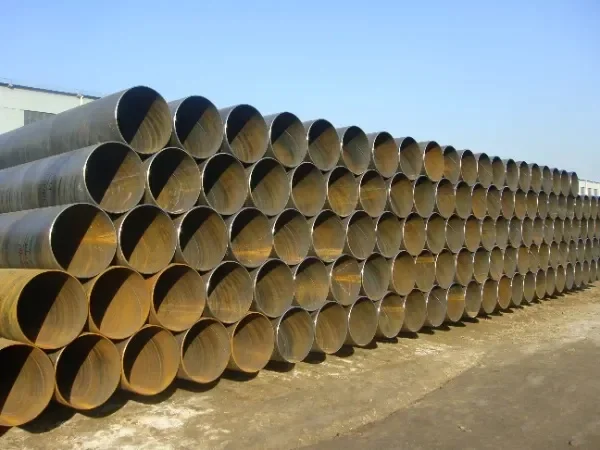How to deal with the weld seam of spiral steel pipe?
Spiral steel pipe is a commonly used pipe material, and its weld seam treatment is a very important part. The quality of the weld seam treatment directly affects the service life and safety performance of the spiral steel pipe. Let's introduce in detail how to deal with the weld around the spiral steel pipe.

1. Weld seam cleaning: Before welding, the weld seam must be cleaned. The purpose of cleaning is to remove oil, rust, oxides, and other impurities on the surface of the weld to ensure the quality of the weld. Cleaning methods include mechanical cleaning and chemical cleaning. Mechanical cleaning is mainly to use of mechanical tools to scrape or polish off the impurities on the surface of the weld; chemical cleaning is to use of chemicals to dissolve the impurities on the surface of the weld. In addition, during the welding process, some impurities such as oxides and welding slag will be produced around the weld seam. If they are not cleaned up in time, the quality of the weld seam will be affected. Therefore, after the welding is completed, the weld should be cleaned in time to remove impurities.
2. Weld seam preheating: Before welding, the weld seam needs to be preheated. The purpose of preheating is to make the temperature of the weld uniform and reduce the thermal stress and cooling cracks during welding. The preheating temperature is generally 80%~150% of the welding material.
3. Welding technology: The welding methods of spiral steel pipe mainly include submerged arc welding, gas-shielded welding, manual arc welding, etc. Different welding methods are suitable for different occasions. When choosing a welding method, it is necessary to consider factors such as the type, thickness, and welding position of the welding material, and select the appropriate welding method and welding material to ensure the quality and strength of the weld. At the same time, it is also necessary to control the welding temperature and speed to avoid excessive heat and stress during the welding process, which will affect the quality and strength of the weld.
4. Welding parameters: Welding parameters include welding current, voltage, welding speed, etc. Different welding parameters will have different effects on the quality of the weld. When welding, it is necessary to select the appropriate welding parameters according to the actual situation.
5. Post-welding treatment: After the welding is completed, the weld seam needs to be cleaned and polished to ensure that the surface of the weld seam is smooth and burr-free. At the same time, it is also necessary to inspect and test the weld to ensure that the quality and strength of the weld meet the requirements.
6. Anti-corrosion treatment of welds: Spiral steel pipes are often affected by corrosion during use, so anti-corrosion treatment is required for welds. Commonly used anti-corrosion methods include spraying anti-corrosion paint, coating anti-corrosion film, etc. When selecting anti-corrosion materials, they should be selected according to the use environment and requirements of the pipeline to ensure the anti-corrosion effect.
In short, the weld seam treatment around the spiral steel pipe is very important work, which requires strict control and treatment before, during, and after welding. Only in this way can the service life and safety of the spiral steel pipe be ensured.
How to choose high-quality spiral steel pipe
How to weld spiral steel pipe properly
How to prolong the service life of spiral steel pipe? The key lies in these factors
From appearance to performance, how to comprehensively test the quality of spiral steel pipe
The difference between steel pipe pile and spiral steel pipe






